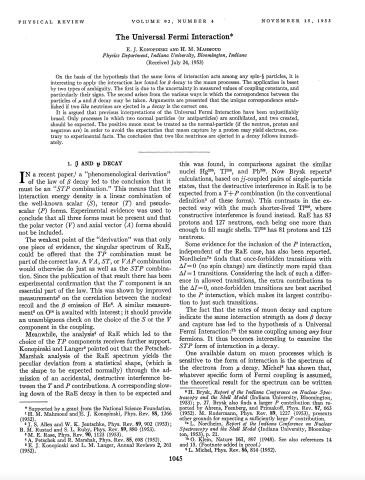The Universal Fermi Interaction

On the basis of the hypothesis that the same form of interaction acts among any spin-½ particles, it is interesting to apply the interaction law found for β decay to the muon processes. The application is beset by two types of ambiguity. The first is due to the uncertainty in measured values of coupling constants, and particularly their signs. The second arises from the various ways in which the correspondence between the particles of μ and β decay may be taken. Arguments are presented that the unique correspondence established if two like neutrinos are ejected in μ decay is the correct one.
It is argued that previous interpretations of the Universal Fermi Interaction have been unjustifiably broad. Only processes in which two normal particles (vs antiparticles) are annihilated, and two created, should be expected. The positive muon must be treated as the normal-particle (if the neutron, proton and negatron are) in order to avoid the expectation that muon capture by a proton may yield electrons, contrary to experimental facts. The conclusion that two like neutrinos are ejected in μ decay follows immediately.
Since the publication of that result there has been experimental confirmation that the T component is an essential part of the law. This was shown by improved measurements on the correlation between the nuclear recoil and the beta emission of He6. A similar measurement on O14 is awaited with interest; it should provide an unambiguous check on the choice of the S or the V component in the coupling.